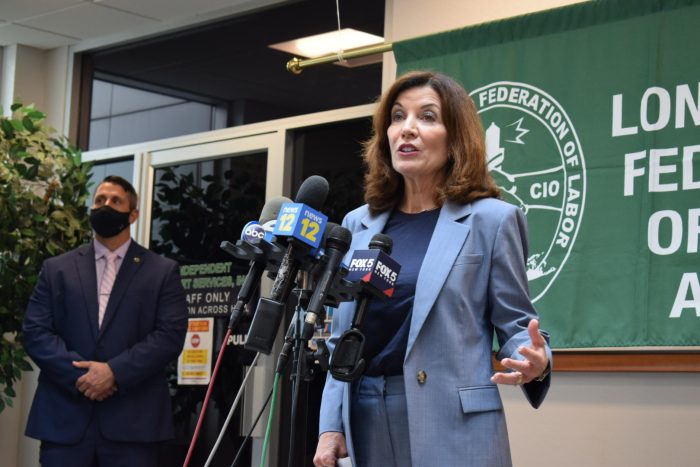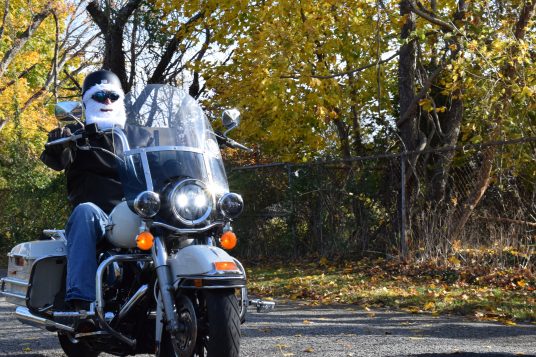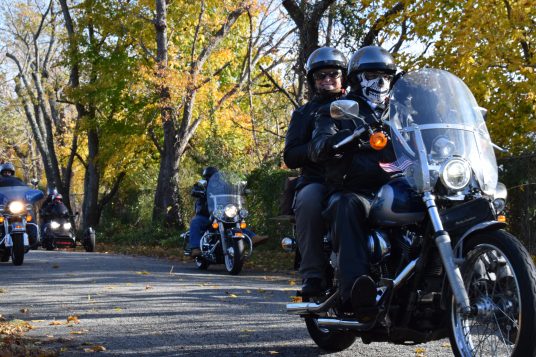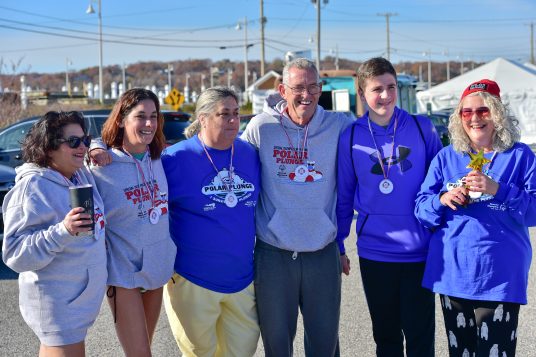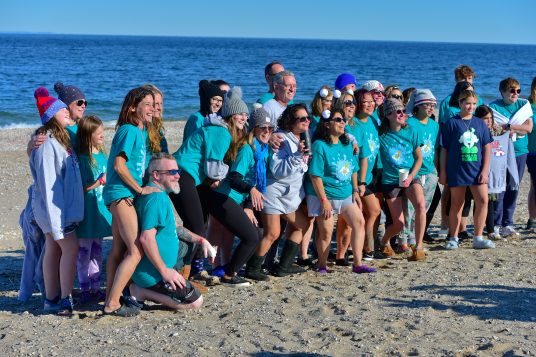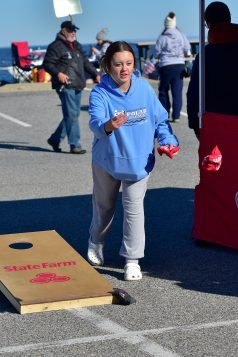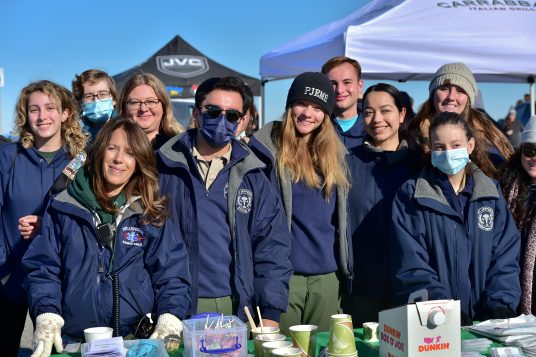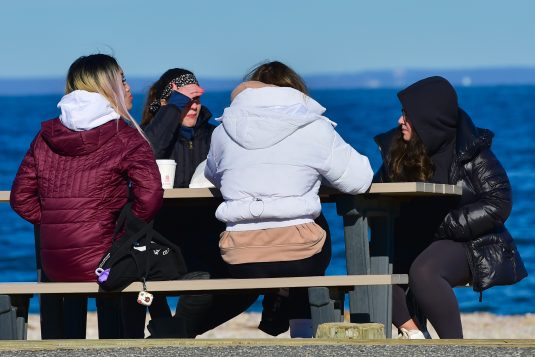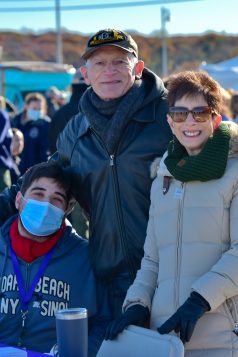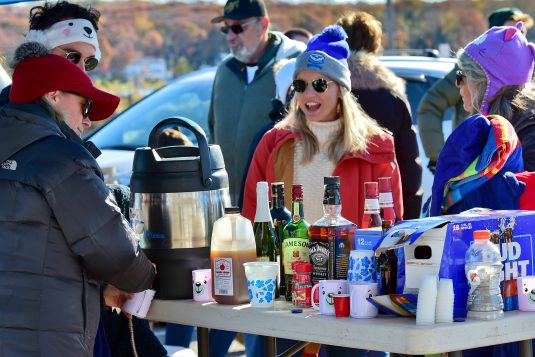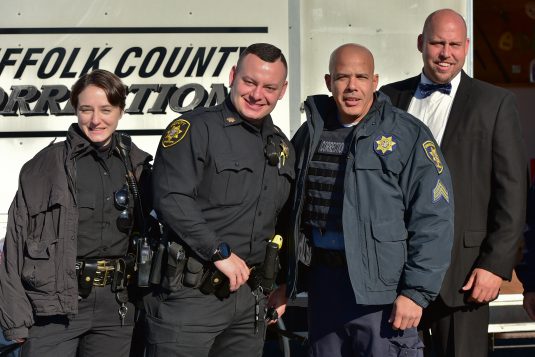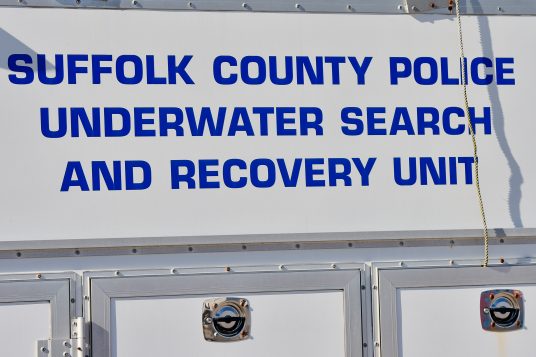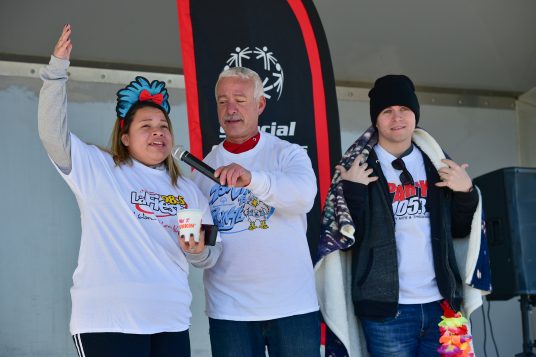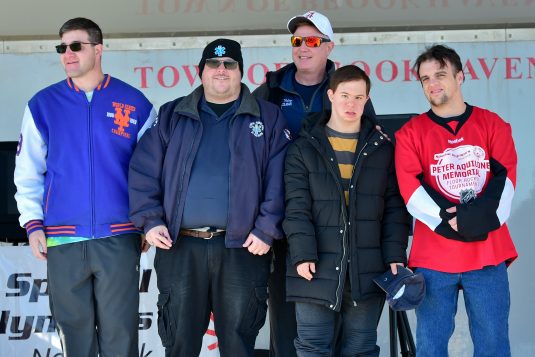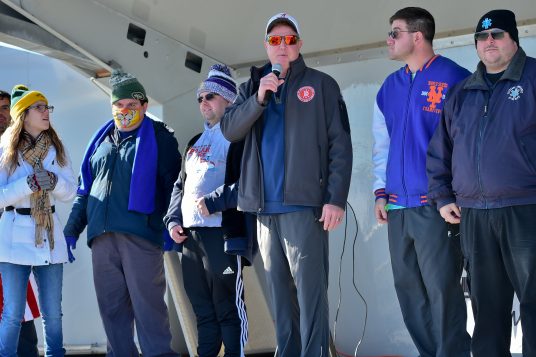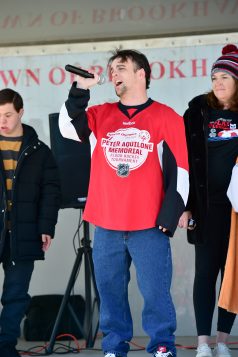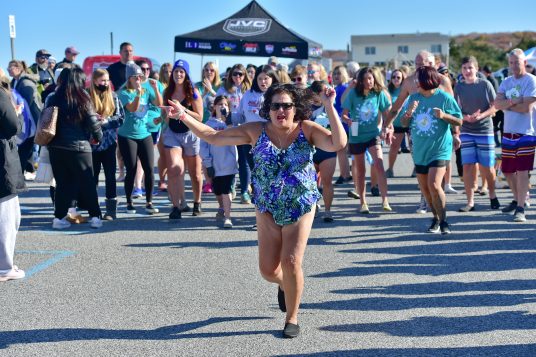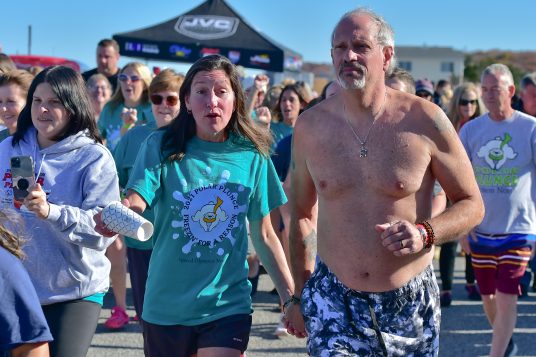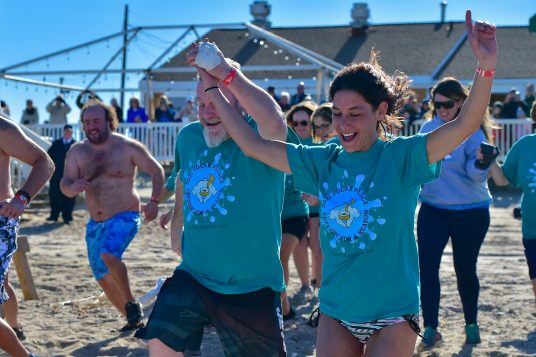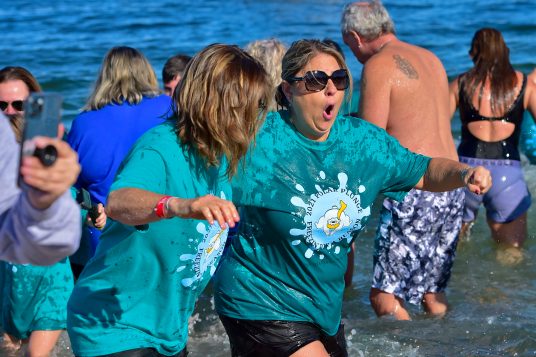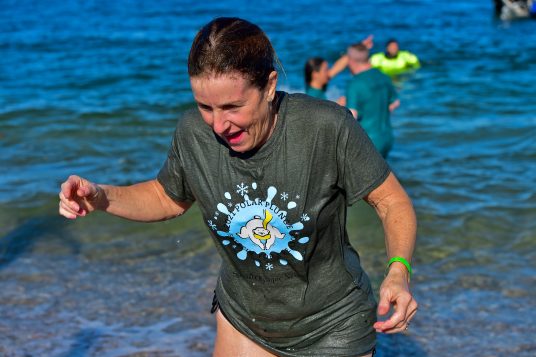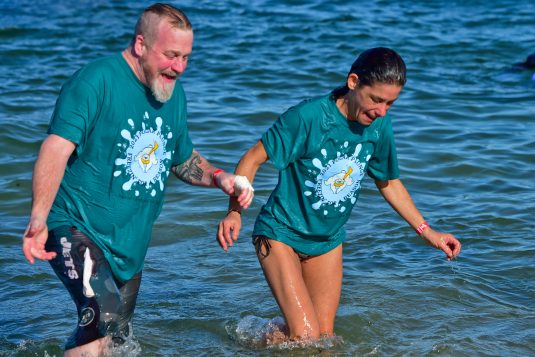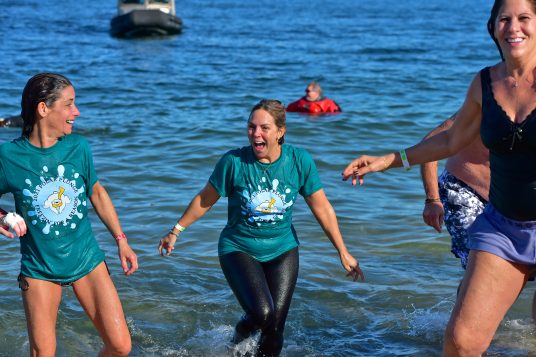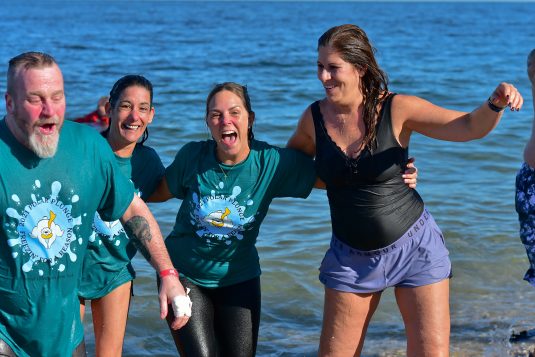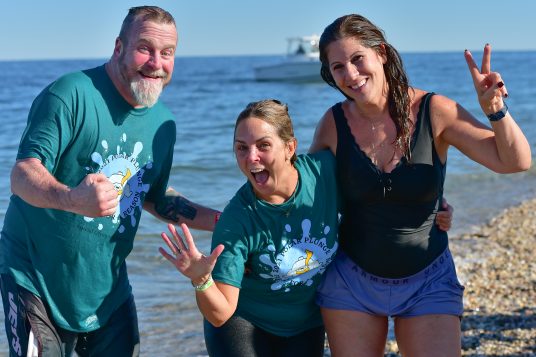New York Gov. Kathy Hochul issues state of emergency in response to omicron variant
State of Emergency to Trigger Use of Surge and Flex System and Expand Purchasing Ability
Department of Health Will Be Permitted to Limit Non-Essential, Non-Urgent Scheduled Hospital Procedures If Necessary to Ensure Capacity
New Omicron Variant Not Detected in New York State Yet, but Hochul Warns: ‘It’s Coming’
New York State Governor Kathy Hochul today announced urgent action to boost hospital capacity and address staffing shortages ahead of potential spikes in COVID-19 cases this upcoming winter. Through an Executive Order signed by Governor Hochul, the Department of Health will be allowed to limit non-essential, non-urgent procedures for in-hospitals or systems with limited capacity to protect access to critical health care services. Limited capacity is defined as below 10% staffed bed capacity, or as determined by the Department of Health based on regional and health care utilization factors.
The new protocols will begin on Friday, December 3, and will be re-assessed based on the latest COVID-19 data on January 15. The Executive Order will also enable New York State to acquire more quickly any critical supplies to combat the pandemic.
“We’ve taken extraordinary action to prevent the spread of COVID-19 and combat this pandemic. However, we continue to see warning signs of spikes this upcoming winter, and while the new Omicron variant has yet to be detected in New York State, it’s coming,” Governor Hochul said. “In preparation, I am announcing urgent steps today to expand hospital capacity and help ensure our hospital systems can tackle any challenges posed by the pandemic as we head into the winter months. The vaccine remains one of our greatest weapons in fighting the pandemic, and I encourage every New Yorker to get vaccinated, and get the booster if you’re fully vaccinated.”
The Hochul Administration continues to take comprehensive steps to prevent the spread of COVID-19, including mask protocols in health care and P-12 school settings, correctional facilities and detentions centers, public transportation and at transportation hubs, and implementation of the HERO Act which requires all employers to implement workplace safety plans in response to COVID-19.
The Administration continues to focus on boosting vaccination rates among New Yorkers, including bolstering the State’s network of vaccine access points, and working to expand testing supplies. That also includes acting on our comprehensive plan to vaccinate school-aged children 5-17, provide incentive programs, combat vaccine misinformation campaigns, increase vaccine awareness, deploy pop-up vaccines in targeted low-vaccination areas, and implement vaccine requirements for health care workers. On August 24, the vaccination rate among adults with one dose was 78.8%. Today, it is 90.2%.
Further, the Administration continues to ramp up booster shots and urges all New Yorkers to get the booster dose once fully vaccinated. As of November 24, over 2.2 million boosters and/or additional doses have been administered. Nearly 4,500 locations across are administering booster shots.
The Administration will continue to partner with local leaders to make vaccines, boosters and testing more widely available.
LI nurses see Gov. Hochul’s scholarships as important first step
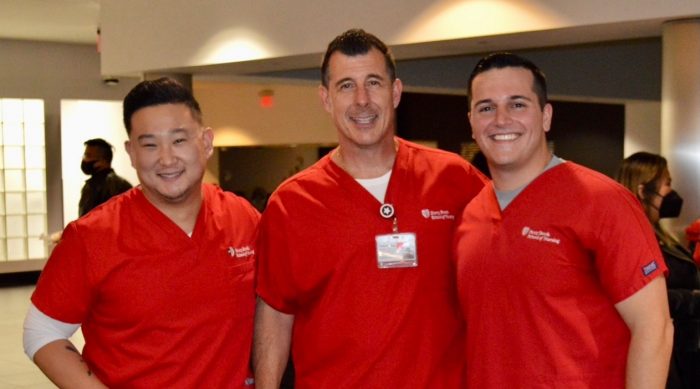
In the wake of an expected nursing shortage and amid an uncertain battle against a pandemic that is well into its second year, Gov. Kathy Hochul (D) announced a scholarship program to support future nurses last week.
The program, called Nurses for Our Future Scholarship, will cover tuition for 1,000 health care workers to get their Resident Nursing degrees at State University of New York and the City University of New York colleges.
The governor announced that the scholarships were designed to address the shortage in health care and a lack of workers in hospitals across the state.
In a statement, Gov. Hochul called the scholarships an “important step to train more nurses and bring them into our health care system.” She added that the pandemic has “shown us that we cannot afford a labor shortage in the health care industry.”
Nursing officers at area hospitals applauded the announcement and suggested it was an important first step in confronting some of the challenges the nursing community faces.
“I was thrilled” with the announcement, said Susan Knoepffler, chief nursing officer at Huntington Hospital. “I’m absolutely grateful for this incentive to go into the field.”
Knoepffler said hospitals throughout the area and the country had a nursing shortage even before the pandemic.
Knoepffler said Huntington Hospital is also hoping to spark an interest in nursing and health care at area high schools, including Commack High School. Huntington Hospital is providing a few students with the opportunity to learn about nursing and is looking to expand that program.
Nurses are “critical to the health of health care,” Knoepffler added. “If we don’t have enough nurses, we’re not going to be able to provide optimal health care.”
Indeed, a study in 2018 in the American Journal of Medicine calculated that patients in intensive care units were accompanied by nurses for over 86% of their time, compared with 13% with physicians and 8% with critical support staff. The figure exceeds 100% because some of these health care workers were in the room at the same time.
These scholarships will help students who might otherwise struggle financially to enter a profession that will be in increasing demand, particularly as current nurses retire.
“Having scholarships to help students stay in or enter the profession is great,” said Annette Wysocki, dean of the School of Nursing at Stony Brook University. “We have a lot of first-generation students.”
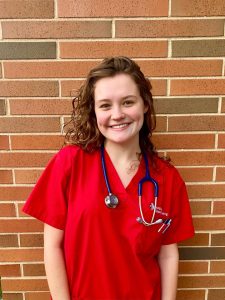
These scholarships can also help ensure that students from a variety of ethnic and socioeconomic backgrounds enter a challenging but rewarding field, providing underserved populations and communities with a link to the health care community.
Those students who graduate from nursing programs are likely to find a variety of professional opportunities, giving them greater chances to work in geographic areas and in medical specialties that appeal to them.
The American Nursing Association anticipates that more registered nurse jobs will be available through 2022 than any other profession in the country, according to Stony Brook University.
Robert Milone, who is working to earn a bachelor’s in nursing at Stony Brook in 2022, said he has received considerable encouragement about future prospects.
“There’s a lot of buzz around employment afterwards,” Milone said. He anticipates finding more “opportunities for our graduating class than there were.”
Some nurses have advised Milone, who is a native of Seaford and already earned a Bachelor’s Degree from Stony Brook in Health Science, to pursue his “dream job” after graduating.
While nurses applauded Hochul’s decision to create these scholarships, they described numerous nursing challenges.
The scholarships are a “fabulous idea,” said Nicolette Fiore-Lopez, chief nursing officer at St. Charles Hospital. While the scholarships will help in the future, “we need some help right now.”
Fiore-Lopez said a number of nurses have left the profession, both in New York and nationally.
Additionally, the pandemic may cause an increase in residents who need medical attention in the later parts of the fall and winter, when more people are indoors and when families come together from all over the country.
“By all predictors, we believe we will see another surge,” said Fiore-Lopez. “Hopefully, it will remain somewhat blunted, with vaccines being what it is. Not having enough staff [could] become an issue.”
Fiore-Lopez urges states to think creatively about staffing solutions.
In addition to spending more on nursing students, New York and, indeed, the country, should consider investing more in the education system, which is already straining for resources.
For the past three years, the Stony Brook School of Nursing has admitted 160 students into the pre-licensure undergraduate program, which is about 14.2% to 15.9% of the qualified applicants they receive each year.
“We fervently wish we could accept more students but cannot because we do not have a sufficient number of faculty and resources,” Wyoski explained in an email.
Stony Brook’s nursing school, which has no endowed faculty positions, endowed professorships or endowed lecturers is “already stretched beyond our limits,” Wysocki added.
Fiore-Lopez suggested that the nursing system needs short-term and long-term fixes.
“I see the governor’s proposal as a long-term fix,” she said. In the shorter term, the nursing system needs other assistance, including some financial relief to provide extra staffing.
In the meantime, current students continue to hope to put their training and ambition to use in a field in high demand, particularly during the pandemic.
Jaclyn Jahn, another student in Stony Brook’s undergraduate nursing program, is following in the footsteps of her mother Lynda Jahn and her grandmother Joann Monahan, who have both been nurses.
Her mother and grandmother are “two of the most upstanding, independent, confident women I’ve ever met,” Jahn said. “They are everything I hope to one day live up to.”
Jahn, who sees her role as a patient advocate, looks forward to explaining medicine to patients and to helping patients “feel comfortable and heal.”
Happy Thanksgiving from TBR News Media!
Editorial: Supporting small businesses this holiday season
There are certain things Cyber Monday and the internet can’t do for us as we shop during this holiday season. While the sales may be great online, there are some downfalls that we’ll experience this year making shopping locally even more important.
The next several weeks are going to be hard for devoted holiday shoppers thanks to COVID-19 and the continuous supply chain concerns that are happening across the country.
Experts are anticipating that large retailers like Apple and Amazon will experience a hit with sales due to shipping issues and staffing challenges. And although this will be tough for those businesses, it will also be a stress for the consumers themselves.
Whereas shopping via online Black Friday and Cyber Monday deals in the past was an easy click with shipping coming days after, buyers might see a delay in receiving those products in the mail.
But this might be a good time for us to take a step back and really support our neighbors who own their own shops in our local villages and towns.
Instead of anticipating a package in the mail — which might not even get here on time — we should head into town and shop small this holiday. The goods will be there right in front of us and we can take them home that day — easy one-stop shopping that makes our lives easier, but also provides income to a family owned business.
Shopping small comes with its own benefits: we can see the products, touch them and measure them for size. We can find unique things that may not be available on a larger company website, making that gift a one-of-a-kind present the recipient will treasure.
And on top of that, it provides that shop owner with extra money to pay their own bills. Shopping small is a win-win for everyone.
After a tough two years post the initial outbreak of the pandemic, mom and pops have been hit hard with little ability to recover.
By shopping locally this year, it brings money back to the economy which then goes back to our own street repairs and our community.
We know that online shopping is usually easier, but with the current state of inventory and the surrounding issues, it might actually be better to walk over and visit a family owned shop.
Try it out this holiday season, and you certainly won’t be disappointed.
D. None of the Above: Mundane and magnificent moments during and after a magical moon
By Daniel Dunaief

Ah, the benefits of an older bladder.
Granted, that’s not generally the case. Usually, I get up in the middle of the night, realizing that the dream that involves the search for a bathroom is my brain’s way of telling me that I need to urinate in real life.
I shift my weight slightly toward the floor, hoping that the rocking motion of my body doesn’t move the bed so much that I wake my wife or the cat sleeping on her, who sometimes sees my movement as a starter’s gun to race toward the table in the laundry room to devour another can of the same food he eats every day.
I slide my feet off the bed and try not to step on our huge dog, who moves around often enough that he could easily be that furry thing under my feet. My toes can’t always tell whether that’s him or just the softer part of the inside-out sweatpants I’ve been wearing for a week. I also try to avoid the other cat, whose tail is like a spring waiting for me to step on so he can shriek loudly enough to wake my wife and terrify the other cat and the dog.
When I reach the bathroom, I try to urinate into the bowl but away from the water to avoid any splashing sound. I retrace my steps back to the bed, hoping the safe places to step on the way out from the bed are still safe on the return.
This past week, the bathroom routine gave me the opportunity to look at a rare event. I watched the extended lunar eclipse, which was the longest it’s been in 580 years. I crept out to the hallway to view it through a window, hoping I didn’t have to go out in the cold to catch a glimpse of Earth’s shadow. I was also concerned that the dog, even at 3 a.m., would fear that he was missing out on something and bark, negating my efforts to enjoy the eclipse in silence.
I was amazed at the shadow that slipped slowly across the moon. I took an unimpressive photo that captured the yin and yang of the light and shadow.
The next morning, I ran into some neighbors on my routine walk with my dog.
After saying how they’d stayed up all night to watch this rare event — they are retired and don’t have any time pressure most days — they started to recount their evening.
“I was tempted to dress in black and howl while I watched it,” the man said.
“Excuse me?” I asked.
“Well, you know, I figured as long as I was up, the neighbors on the other side who think it’s OK to play basketball at 11:30 p.m. should know I was awake and active.”
“Hmm,” I said.
“Yeah, and the other day, they had a party and threw beer bottles over the fence into our backyard. It took until late in the day for them to pick them up.”
“That’s terrible,” I said. “Sorry to hear that.”
As I walked back with my dog, who was eager for his post-walk breakfast, I realized we had never discussed the sights from the night before.
Sleep deprivation overshadowed a discussion of the observation of the Earth’s long shadow.
As for me, I was, for the first time, grateful for the momentary need to pee. The evening and the morning interaction that followed brought to the fore a collision of the mundane and the magnificent.
Between You and Me: Chronic migraine reversal with the LIFE diet, a study by a local internist gone viral
By Leah S. Dunaief

A local physician had a remarkable result. In clinical practice, he was treating a patient with severe migraines. The patient, 60 years old, had been experiencing migraines for 12 years. Recently they increased in frequency, and he was enduring six to eight debilitating headaches per month, each lasting more than 72 hours. This equates to 18-24 headache days each month.
For those of us who suffer migraines, we know this must have been horrible. A migraine is not just a bad headache. It is as if a drill were unremittingly penetrating one spot in the head, all the while accompanied by nausea, vomiting and an inability to tolerate light. The aftermath is to feel hung over and unsteady. Migraines steal hours and days from the lives of the afflicted.
The patient had tried various traditional medications, like zolmitriptan and topiramate to no avail. He also avoided possible migraine triggers like aged cheese, caffeine and red wine without success.
The internist, who specializes in lifestyle medicine, put him on a plant-based, high nutrient diet that he created of essentially low inflammatory foods every day. Hence he named it the LIFE diet, and its centerpiece is composed primarily of dark leafy greens, frozen blueberries, a banana and soy milk in a smoothie. These high fiber ingredients, when reinforced with flax seed meal, and a little pomegranate juice, can be made into a 32-ounce drink by a sturdy electric blender. The diet is further reinforced by eating more nutrient-dense veggies, like spinach, kale, arugula and romaine lettuce, for example, at subsequent meals in the day. These foods are thought to reduce chronic inflammation in the body.
The LIFE diet also limits dairy and red meat, whole grains, starchy vegetables and oils, according to reporter Sarah Jacoby, who interviewed the doctor for “Today” last Thursday, Nov. 18.
The results of the new regimen were dramatic. After two months, the patient was experiencing one headache per month. After three months, the headaches were gone. The patient suffered no further migraines. This result has lasted more than seven years so far.
At this point, the local physician, teaming up with his brother, who is a medical researcher, wrote up the study and sent it to the highly prestigious British Medical Journal or BMJ that publishes medical case studies deemed important. Delighted when it was accepted for publication, the doctor, who is a passionate believer in the healing power of dark green leafy vegetables, was further pleased when he learned that BMJ, considering the study valuable enough, had sent out a press release to publications all over the world with a summary.
The response was overwhelming, a testament to the need for a remedy to a universal malady. As of this writing, more than 40 news outlets across the globe, including UPI and WebMD, have picked up the story, from Europe to the Middle East to Asia and Australia, translating it into a dozen different languages.
“I think this (case report) is a tremendous start in the treatment of migraine headaches,” added the local physician. “This is kind of revolutionary to have the ability to say, ‘Not only does it work, but it works in the worst case scenarios. And it works in a short period of time.’” He has seen similar results in other of his patients.
Dr. Charles Flippen, professor of neurology at the David Geffen School of Medicine at UCLA, agreed, stating that the change the patient experienced was, “rather impressive,” especially how long the effect has lasted. He added, “Now a large sample is necessary to draw conclusions about the benefits of diet change on migraines or chronic migraines,” as quoted by Sarah Jacoby for “Today.”
Dr. Dawn Buse, clinical professor in the department of neurology at Albert Einstein College of Medicine in New York said, “There have been some recent studies suggesting that major dietary changes can reduce migraine symptoms,” according to “Today.”
“Even though we don’t know the exact mechanism for migraine, the concept of an inflammatory process as part of the underlying physiology of chronic pain has been around for decades,” explained Flippen. “So the idea that you have a diet that reduces the production of pro-inflammatory substances would fit nicely with our current understanding of migraine … It’s not purely magic that it worked.”
For the doctor, whose work has now circled the globe, the satisfaction is enormous. “I went into medicine to help people. It’s beyond gratifying that I may be helping people to take their lives back by reversing disease with the LIFE diet,” he concluded.
And the name of the local internist who authored the study that has gone viral: my son and our own columnist, David Dunaief, MD.
Shoreham recreation center to host DIY Paint Party
The Robert E. Reid, Sr. Recreation Center, Defense Hill Road & Route 25A, Shoreham will host a DIY Paint Party on Thursday, Dec. 9 from 6:30 to 8:30 p.m. Join them for a fun evening out with The Crafty Bean Boutique and make q beautiful mini Christmas tree sign set. All supplies needed are included to make this unique sign and can be painted in 25 different color options.
Measurements Include:
Larger Tree – 10″ tall
Small Trees 9.5” tall
Merry Christmas banner 13” wide
$40.00 per participant
*Call 631-744-2601 to register by Monday, Nov. 29.
Motorcycle club, town ‘bear’ toys for kids in need
It was certainly not an “unbearable” day.
On Sunday, Nov. 21, the Town of Brookhaven teamed up with the Red Knights Motorcycle Club NY Chapter 26 for its annual “Teddy Bear Run.”
Each year, the club holds the event to collect donations of new Teddy Bears for thousands of needy children through the Town of Brookhaven Youth Bureau INTERFACE program.
Bikers from across the Island then ride together from the North to South shores for a participation fee and toy donation.
Stuffed animals of all shapes and sizes were donated at the Terryville Fire Department Headquarters in Port Jefferson Station where hundreds of riders met before heading to their final stop — Painter’s restaurant in Brookhaven.
“I want to thank the Red Knights Motorcycle Club for their generosity and continued support of this program,” said Supervisor Ed Romaine (R). “These contributions will make it possible for so many children in need to experience the joy of opening a gift this holiday season.”
The Red Knights are an international firefighters motorcycle club and have been co-sponsoring the Teddy Bear run for nearly two decades.
“These guys, their day job is being heroes,” said Councilman Jonathan Kornreich (D-Stony Brook). “They spend their off-time getting involved in good causes like this and we really appreciate these guys so much.”
— All photos by Julianne Mosher
Town of Brookhaven hosts 12th annual Polar Plunge
Freezin’ for a reason.
The Town of Brookhaven held its 12th annual Polar Plunge at Cedar Beach this past weekend, where 544 people stripped down and hit the chilled water of the Long Island Sound all for a good cause.
On Saturday, Nov. 20, volunteers gathered at the beach in their swimsuits and shorts to benefit the Special Olympics which raises funds and awareness for Special Olympics New York athletes in the Long Island region. This year a collective $131,033 was raised.
“The Polar Plunge is a great opportunity for the community to make a difference in the lives of the Special Olympics athletes,” said Supervisor Ed Romaine (R). “I thank all the volunteers, Town employees, police, fire and ambulance staff who work so hard to support the Special Olympics athletes every year.”
Special Olympics New York is the largest state chapter in the country, serving more than 51,000 registered athletes and unified partners across New York with year-round sports training, athletic competition and health screenings.
The organization also partners with about 250 schools statewide to offer Unified Sports, where students with and without disabilities compete as teammates. All Special Olympics New York programs are offered at no cost to athletes, their families and caregivers.
— Photos by Bill Landon



